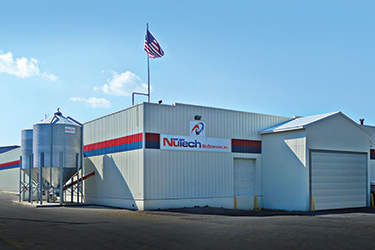With a batch capacity of 140 cu ft (4 m3), the Rotary Batch Mixer at NuTech Biosciences has doubled output of nutritional feed supplements.
Internal mixing flights produce a tumble-turn-cut-fold mixing action that achieves uniform blends.
Nutech Biosciences manufactures and markets nutritional feed supplements to livestock producers and commercial manufacturers of animal feed.


